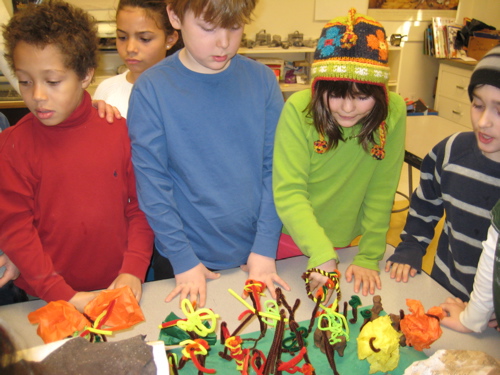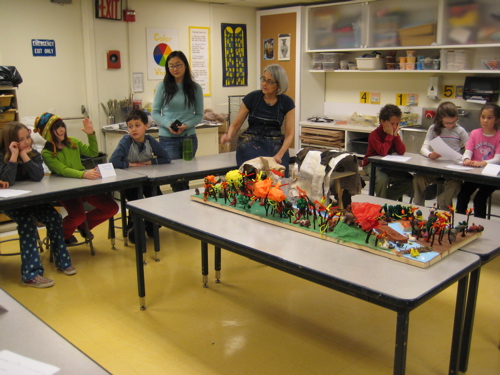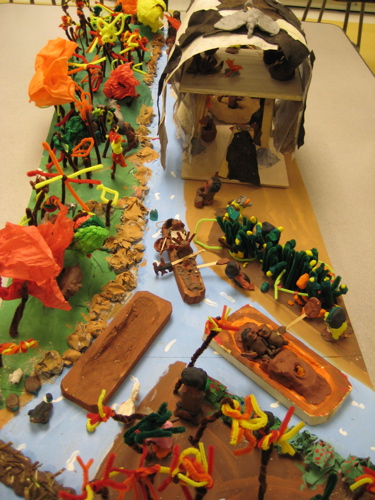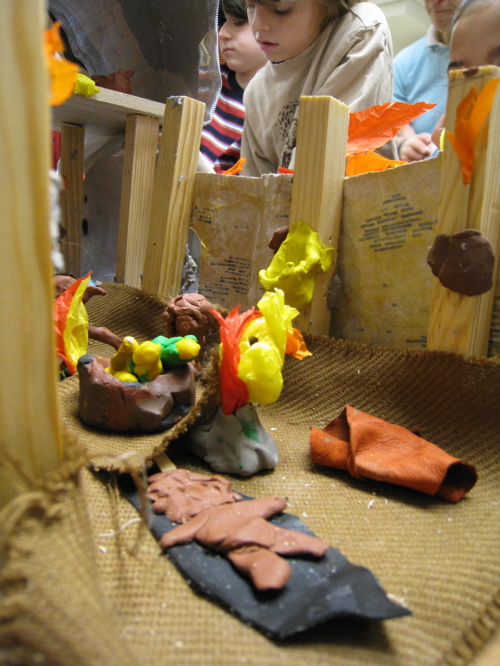Lower Schoolers Integrating Subjects, Working Cooperatively
In addition to being fun, integrating subject matter learning across subjects has many benefits. Students witness teachers cooperating and modeling those skills and their value; students can show what they’ve learned in more than one style or mode of presentation; and students can learn from one another.The third grade has been studying and researching the Lenape Native Americans. The Lenape lived in our area at the time that European explorers and settlers reached these shores. Recently, third grade teachers came together with art and shop teachers to integrate learning for this social studies project. Third graders used the research they did in class to create a three-dimensional model of an active Lenape village. I had the privilege of listening to the third graders as they gathered last week in research teams (Houses, Food, Hunting and Fishing, Transportation) to discuss their cooperative creation. They were seated in a large square, around their model. One of the first comments set the tone: “This is awesome!” The students’ enjoyment was evident. They proceeded to discuss their learning, listened intently to one another, and marked with interesting questions and suggestions. When asked by Peggy Resnick (woodshop teacher) what the best part of working in a group was, students made observations such as “It’s fun to have help,” and “Things get done faster.”


As we often do at LREI, the talk turned next to focus on “process.” Students were asked what it was like to work in a group, what could have gone better, and what did they notice that other students made. Answers to this last point included, “Details in the long house and wigwam like beds and fires,” and “a person picking berries in a basket and the berries really looking like berries.”

